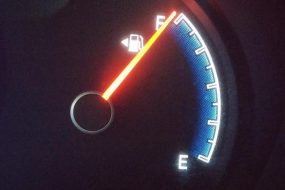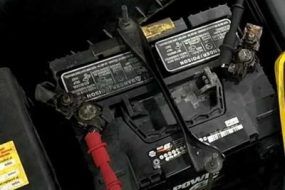
A car battery stores electrical energy, which is then released to start the engine and power various electrical systems, such as lights, air conditioning, and infotainment systems. The battery works in tandem with the alternator, which replenish the battery’s charge while the engine is running.
The battery terminals serves as the crucial link between the battery and the rest of the vehicle’s electrical system. They are made of lead and are connected to the positive and negative terminals of the battery,
When the terminals are securely fastened, the flow of electrical current is smooth and uninterrupted. But when the battery terminal is loose, that’s where the issue starts. Therefore, can a loose battery terminal cause a car to stall?
Yes, a loose battery terminal can cause a car to stall because the terminals are not securely fastened thereby interrupting the flow of electrical current depriving the car and all the electrical components from receiving the required voltage for optimal performance.
Can a Loose Battery Terminal Cause a Car to Stall?
Yes, “a loose battery terminal can cause a car to stall because the battery is responsible for providing power to start the engine and supplying electrical energy to various systems while the engine is running. “If the battery terminals are loose, it can disrupt the flow of electrical current and lead to several problems, including stalling”.
When the terminals are securely fastened, the flow of electrical current is smooth and uninterrupted, allowing the starter motor to draw the necessary power to crank the engine and start the vehicle, but when it is loose, it can cause interruption of electical current causing the car to stall.
How Can a Loose Battery Terminal Cause Stalling?
Here’s how a loose battery terminal can cause stalling:
- Loss of Electrical Connection: The battery terminals connect the battery to the car’s electrical system. If one or both terminals are loose, it can result in an intermittent or poor electrical connection leading to disruptions in the power supply to important components like the ignition system or fuel pump.
- Intermittent Power Loss: When driving, the electrical demands on the car’s system fluctuate. A loose battery terminal may cause intermittent power loss, affecting the operation of critical components. This can result in the engine stalling, especially if the ignition system or fuel pump is momentarily deprived of power.
- Voltage Drop: Loose battery terminals can create resistance in the electrical circuit, causing a voltage drop. This can affect the performance of electronic components and sensors in the engine control system, leading to stalling or erratic engine behavior.
Problems of Having a Loose Battery Teminals
Other problems loose battery terminals can cause are:
1. Starter Motor Issues
The starter motor relies on a robust electrical connection to draw the power needed to crank the engine. With loose terminals, the starter motor may not receive an adequate supply of electricity, causing starting problems and stalling.
2. Interference with Engine Sensors
Modern vehicles are equipped with an array of sensors such as MAP sensors or MAF sensors, etc, that monitor and regulate various aspects of engine performance.
“A loose battery terminal can introduce electrical interference, affecting the accuracy of sensor readings. This, in turn, may lead to engine misfires or stalling”.
3. Charging System Dysfunction
Loose battery terminals can compromise the charging system’s efficiency. The alternator may struggle to recharge the battery, leading to a gradual depletion of power which if left unaddressed can result to a drained battery and an increased likelihood of stalling.
Be that as it may, if your car is experiencing stalling issues, it’s crucial to investigate the possibility of loose battery terminals.
Here are steps to diagnose and address the problem:
1. Visual Inspection
Begin by visually inspecting the battery terminals. Check for any signs of corrosion, rust, or loose connections. Tighten the terminals using a wrench if they are not snug.
2. Clean the Terminals
Corrosion on the battery terminals can hinder electrical conductivity. Use a mixture of baking soda and water or a commercial battery cleaner to remove corrosion. Clean the terminals with a wire brush to ensure a clean, metal-to-metal connection.
3. Secure the Terminal Connections
Ensure that the battery terminals are securely fastened. Use a wrench to tighten the bolts on the terminals, making sure they are snug but not over-tightened.
4. Inspect the Cables
Examine the battery cables for any signs of damage or wear. If the cables are frayed or damaged, they may need to be replaced to ensure proper electrical conductivity.
5. Test the Battery
Conduct a battery test to assess its overall health. A weakened or failing battery can contribute to stalling issues. If the battery is found to be faulty, replacement may be necessary.
Conclusion
Having loose battery terminals is a minor issue that can cause huge problems to your car’s engine and overall performance of your car such as stalling especially when one or two of the car’s battery terminals are not securely fastened to the terminal. It can cause electrical interruption hence leading to the vehicle stalling. All you have to do is to fasten the loose battery terminal, restart your car and you’re good to go.




